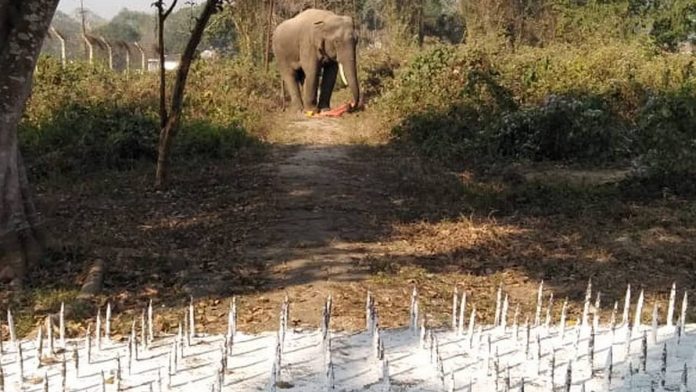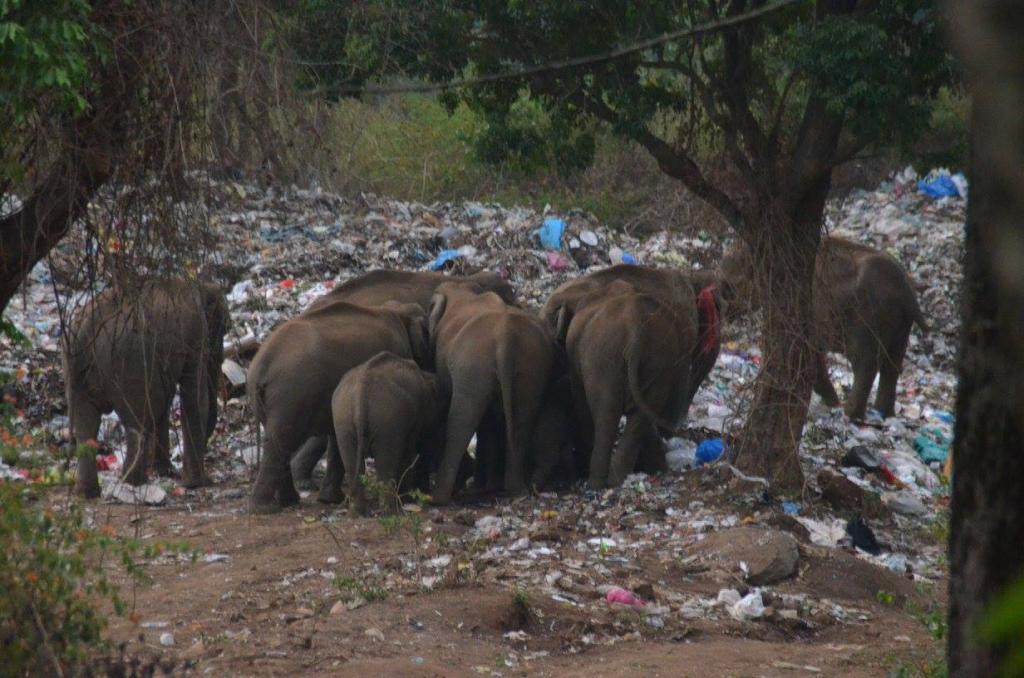New Delhi: Days after a bed of six-inch long metal spikes installed by the Indian Army in Assam allegedly claimed the life of a male elephant, union minister Maneka Gandhi took up the issue with Army Chief Bipin Rawat and asked him to immediately remove the deadly spikes.
The spikes, laid down by the Army to prevent elephants around the Amchang Wildlife Sanctuary in Guwahati from entering the military installation adjacent to it, have allegedly caused at least two elephant deaths, and left several injured.
Taking strong exception to the Army’s installation of what she called “the dreadful spikes”, Maneka said, “Whoever in the Army has done this needs to be pulled up…The Army has no business of putting these lethal spikes in the middle of a forest.
“I have spoken to the commander-in-chief, and he told me he has no knowledge of this, and will take immediate action,” she told ThePrint Friday.
“We have less than 15,000 elephants left in this country, are we going to kill them all?” she said.
According to the 2017 census of elephants, there are 27,312 elephants in the country, which account for 55 per cent of the total elephant population in the world.
Gandhi not the only one to outrage
A month before the male elephant was found dead on 4 March — it reportedly succumbed to septicaemia caused by a wound in the leg — the forest department had warned the Army against the “cruel” measure, asking it to remove the spikes, which would endanger the lives of the “innocent animals”.
In a letter written on 28 December — a day after another elephant was injured — District Forest Officer (DFO), Pradipta Baruah said, “This type of cruel effort to keep the elephants at bay is definitely going to defeat the very spirit of wildlife protection and preservation.
“You are, therefore, requested to do away with this type of detrimental measures… and evolve to take recourse to a more compassionate method in tandem with the wildlife division in the true spirits of protecting the wildlife.”
According to the post-mortem report of the elephant, it had punctured wounds on its right hind leg and foreleg which officials in the forest department believe were caused due to the spikes.
“Several elephants have been injured in this area due to these spikes, and we have constantly maintained that the Army should remove them, but nothing has been done till now,” an official in the Guwahati wildlife division told ThePrint.
“The way to deal with man-animal conflict is not to put the lives of animals in jeopardy,” the official said.
Long-drawn problem in Assam
While man-animal conflict is a raging issue across several parts of the country, it is particularly stark in Assam, where 249 elephants and 761 people have died since 2010 owing to the problem.
Poaching, train-related accidents, poisoning and electrocution have all contributed to the dwindling elephant population in the region.
Additionally, the shrinking natural habitat of elephants compels them to stray into human habitation, thereby increasing the incidents of conflict.
According to environment ministry data, in the last five years, nearly 500 elephants have died in the country due to unnatural factors.
Out of the 490 deaths recorded since 2013, more than half the deaths — 267 — have occurred due to electrocution, followed by poaching (92), rail accidents (72), revenge killings (36) and poisoning (23).
Spike
Wildflower Assam, a conservation and livelihood group of CCER, welcomes Army initiative to remove spike used as jumbo barrier in the Narengi Cantonment in Narengi, Guwahati . According to a report published in the Assam Tribune, the Army authorities are in the process of removing the spiked barrier erected inside the Narangi cantonment to “keep away elephants” and the process is likely to be completed within a week’s time.
This was informed by top Army officers today during a meeting with forest officials. wildflower suggests to build up bio fencing and dig pond in the edge area of the cantonment. Wild elephant will use water sources and lessen elephant entry into the cantonment as well as depredation in the area.
The forest team was led by the DFO of Guwahati Wildlife Division, while the Army side was headed by its station commander.
“The Army authorities conceded that the structure was not right and regretted its construction. They claimed that an earlier request by the forest authorities to remove it was also considered, but due to some communication gap it was delayed,” a forest official said.
“Now, they said they are in the process of removing it, and given the type of structure, it would take about a week’s time to remove it. After it is completed, the Army authorities agreed to take a team of forest officials to the site for verification,” the sources said.
Army sources said several other measures, most of which were suggested by the forest department, were being taken to keep away elephants from the cantonment. “We are planting trees and digging trenches as deterrents. The trenches are being built in such a manner that even if an elephant is trapped, it can be taken out easily,” the sources said.
The spiked barrier which had claimed lives of at least two elephants in the past one year and injured another had drawn sharp criticism. The barrier was basically aimed at securing the Army’s supply depot which is often raided by elephants in search of food.
At least three to four elephants virtually live permanently in and around the cantonment located in the vicinity of the Amchang Wildlife Sanctuary. Herds also keep frequenting the cantonment.


